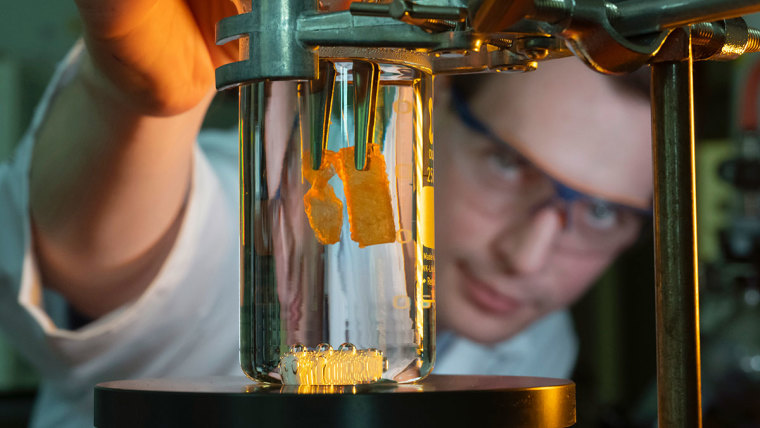
It is impossible to imagine life without plastics. The quantities produced each year are also immense. The German plastics industry alone produced 18.2 million tons last year. Worldwide, the figure is almost 400 million tons. A large proportion of this gets dumped in the environment after it has been used, e.g. in the ocean. Around 10 million tons end up in the oceans every year. This is according to statistics from the Deutsche Umwelthilfe (Environmental Action Germany agency).
But our daily consumer goods can also be problematic. Most of the time their service life is very short, as they cannot be repaired and have to be replaced. In order to be able to change this situation in the future, a team led by chemist and materials scientist Prof. Dr. Ulrich S. Schubert at the Friedrich Schiller University of Jena (Germany) is researching ways of making plastics more sustainable.
Repair surfaces with a hair dryer
“Imagine scratched surfaces on household furniture. In the kitchen, for instance,” says Schubert, as he describes a possible application for these intelligent plastics. “You simply heat that surface – let’s say with a hairdryer. Then it not only looks like new again but in actual fact, it is new.” So-called vitrimers are designed to ensure that everyday items have a longer service life. Consequently, they will not need to be replaced as often. They can also be recycled more easily and thereby make a contribution to environmental conservation.
“Composite materials, in particular, can almost never be recycled. That’s because the materials used in them are practically impossible to separate,” Schubert explains. This problem becomes obvious when wind turbines have to be replaced. ” This is where large amounts of waste are produced, almost solely by the rotor blades. Apart from a few exceptions, there is no viable strategy for the further use of these resources.”
However, the professor stresses that this could all change with intelligent materials such as vitrimers. “These materials can be manipulated. That means their ability to be processed can be managed.” In theory, this would make it possible to produce composite materials that can be separated and reused as needed.
Schubert and his team have set themselves the goal of researching this for the next five years. “We are particularly interested in fiber-reinforced materials,” says Schubert. “We want to embed glass and carbon fibers into the new plastics. These can then be used for lightweight construction and for cutting down on CO2 emissions, among other things. We are also interested in nanocomposites, which have nanofillers that reinforce the material.”
Intelligent plastics are becoming part of everyday life
Schubert is certain that these sustainable plastics will one day become part of everyday life and will be used in aircraft, on surfaces, or in tennis rackets, to name just a few applications. “Vitrimers are still a very recent class of plastics. Concrete applications have not yet been established. However, our goal is to use this research to open up a new generation of sustainable materials.”
The researchers will be funded over a period of five years by the Carl Zeiss Foundation, which has approved funding of €2 million for the project. “Usually you only receive a sum like that by the Deutsche Forschungsgemeinschaft (DFG, German Research Foundation) for a large coordinated project,” Schubert explains. Over the next few years, around eight doctoral students will be studying this new class of materials – from synthesis, processing, and their underlying mechanisms, to their environmental influences, Schubert adds. A junior research group will also be set up
Title photo: Sustainable, intelligent plastics are being studied at the University of Jena. Photo: Jens Meyer (University of Jena)

